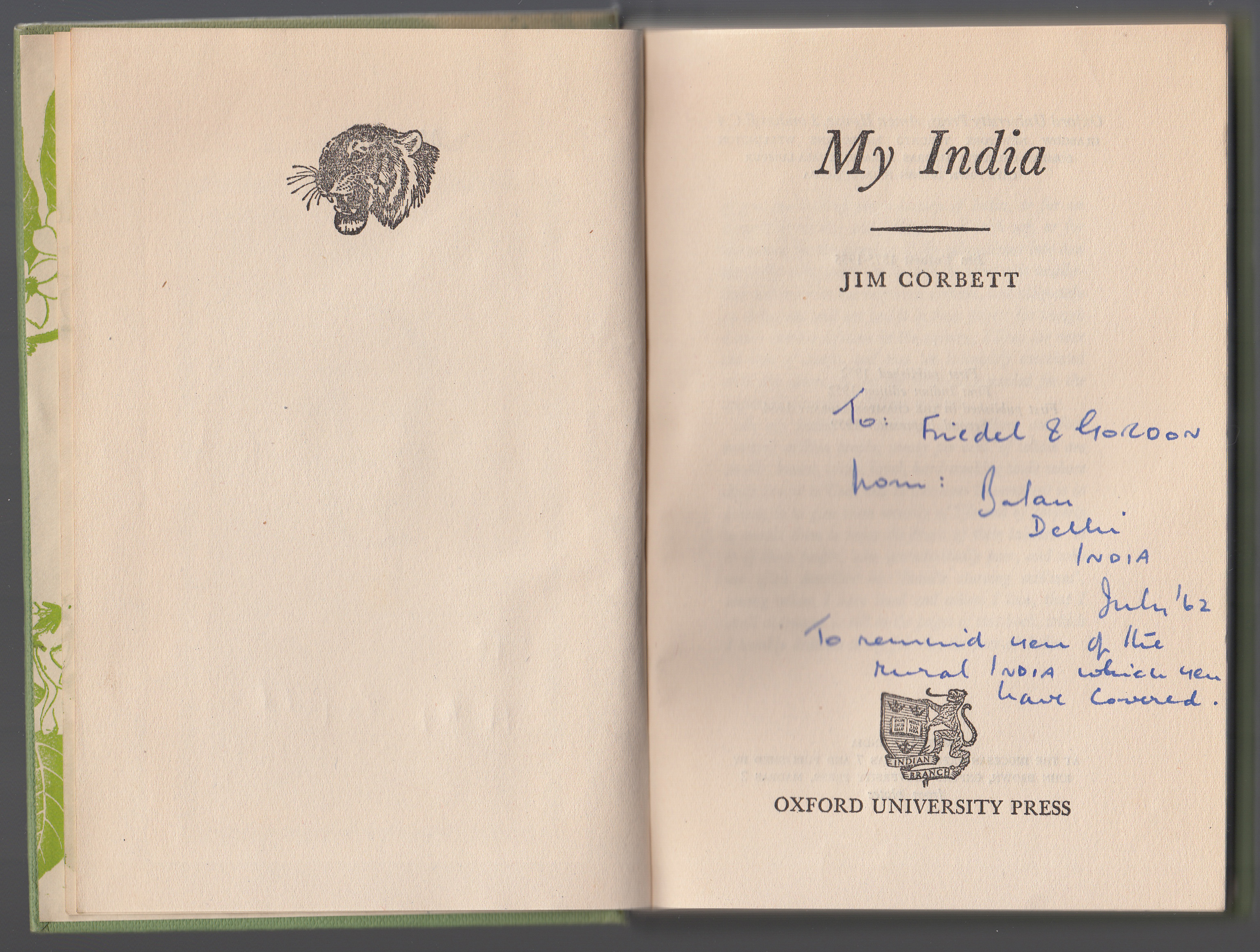Oxford University Press (London, UK; New York, US)
Series dates: 1947-1970
Size: 7.5″ x 5.25″
 The Champak Library series, first issued in 1947, was a product of the India offices of the Oxford University Press. Indian offices were located, around 1950, in Bombay, Calcutta, Delhi, and Madras. According to Indian Book Industry (vol. 6, 1972, p. 20) “The only company … to take some interest in the general Indian cultural scene, as distinct from Indian textbooks, was Oxford University Press. It launched the Champak Library for this purpose.” The last new title (the 12th in the series) was issued in 1966. Reprints occur until at least 1970.
The Champak Library series, first issued in 1947, was a product of the India offices of the Oxford University Press. Indian offices were located, around 1950, in Bombay, Calcutta, Delhi, and Madras. According to Indian Book Industry (vol. 6, 1972, p. 20) “The only company … to take some interest in the general Indian cultural scene, as distinct from Indian textbooks, was Oxford University Press. It launched the Champak Library for this purpose.” The last new title (the 12th in the series) was issued in 1966. Reprints occur until at least 1970.
The Champak Library was modeled after the typical reprint series – smaller format, common design components, with an emphasis on “classics” within its field of specialty, which was Indian life and literature. As far as I can find, the series was edited, printed and sold in India. I have not been able to learn if titles were available through Oxford University Press elsewhere in the world. The pricing on the jacket below is in rupees.
Dust jackets are of two styles: unique jackets, typically illustrated, and a common design (as below). This copy of Jim Corbett’s My India (a second printing in the series, first is 1954, 2nd is 1959) is one of three titles by Corbett in the series and has one of the common design jackets. I’ve seen this jacket design on titles issued later, with the unique jackets on the earlier titles. The jacket is printed on heavier linen paper, with contrasting orange and green colors (mimicking the colors of the champak tree flowers and leaves). The jacket spine includes the title, author and series name. The jacket front includes a large colophon for the series consisting of a champak flower and leaves. The front jacket flap describes the book and its author. The price is 6 rupees.
The back of the jacket lists titles in the series organized by author. Each title includes an excerpt from a review of the title, or note about the title, in addition to its price (either 6 or 7 rupees). The rear jacket flap lists quotes from reviews of the series title.
The twelve titles in the Champak Library, with the year of initial publication:
1947: The Cow of the Barricades and Other Stories, by Raja Rao.
1947: Kanthapura, by Raja Rao.
1947: Man-eaters of Kumaon, by Jim Corbett
1948: The Adventures of King Vikrama, by Hansa Mehta; Samalabhata
1950: I follow After: An Autobiography, by Lakshmibai Tilaka
1950: Three Plays: Mukta-dhara, Natir puja, Chandalika, by Rabindranath Tagore; Marjorie Sykes
1952: With No Regrets: Krishna Hutheesing’s Autobiography, by Krishna Nehru Hutheesing
1953: The Man-Eating Leopard Of Rudraprayag, by Jim Corbett
1954: My India, by Jim Corbett
1958: Leaves from the Jungle; Life in a Gond Village, Verrier Elwin
1961: Jungle Lore, by Jim Corbett
1966: Twilight in Delhi, Ahmed Ali
Green cloth bindings with minimal decorations and black typography:
The series has corresponding endpapers with the series name and a repeating pattern of champak leaves and flowers, in green.
The half title page with an enormous Ex-libris sticker, apparently placed here as to not obscure the designed endpapers.
An illustration of a tiger faces the title page. A gift inscription (dated July 1962) is written on the title page.
The copyright page includes the OUP imprint (including offices in Bombay, Calcutta, and Madras). The author’s birth and death dates are listed. “First published 1952. First Indian edition 1952. First published in the Champak library 1954. Second impression 1959.”
The book was printed in India: “Printed in India at the Diocesan Press, Madras 7 and published by John Brown, Oxford University Press, Madras 2 from plates.”
The table of contents:
The last page of the book includes a booksellers stamp: Higginbothams (P.) Ltd. 26/7 Rs.” British stowaway librarian Abel Joshua Higginbotham was booted from a British ship in Madras (now Chennai) in the 1840s and opened his own bookstore in 1844. The store is currently a chain with 22 locations in south India.
The rear endpapers include a map with “ye olde mappe” decorations, of the area referenced in Corbett’s book:









